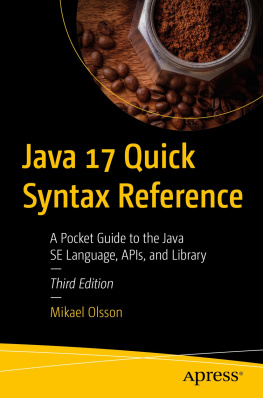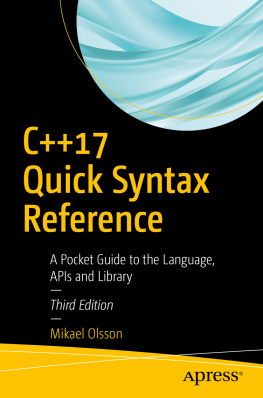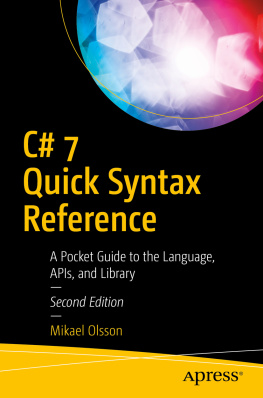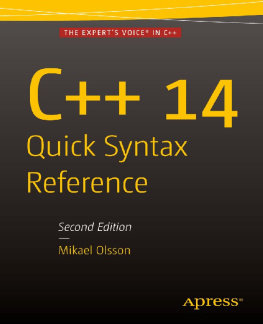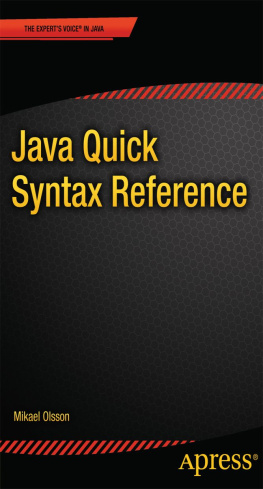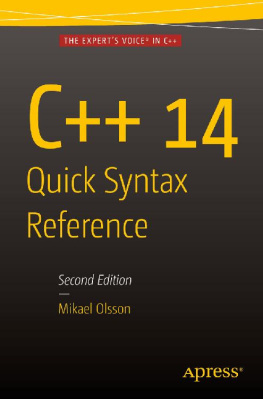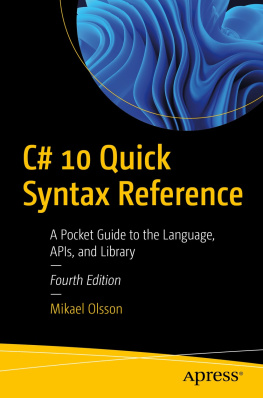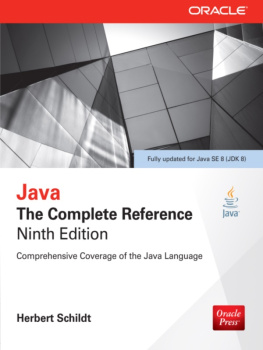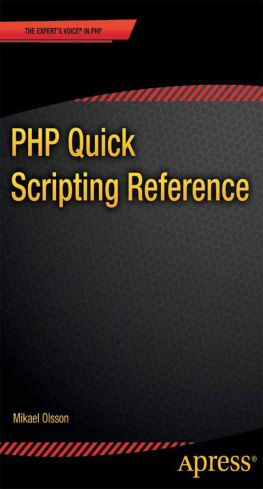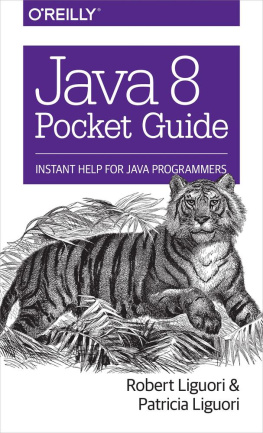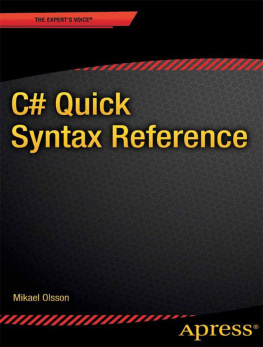Mikael Olsson - Java 17 Quick Syntax Reference: A Pocket Guide to the Java SE Language, APIs, and Library
Here you can read online Mikael Olsson - Java 17 Quick Syntax Reference: A Pocket Guide to the Java SE Language, APIs, and Library full text of the book (entire story) in english for free. Download pdf and epub, get meaning, cover and reviews about this ebook. year: 2021, publisher: Apress, genre: Computer. Description of the work, (preface) as well as reviews are available. Best literature library LitArk.com created for fans of good reading and offers a wide selection of genres:
Romance novel
Science fiction
Adventure
Detective
Science
History
Home and family
Prose
Art
Politics
Computer
Non-fiction
Religion
Business
Children
Humor
Choose a favorite category and find really read worthwhile books. Enjoy immersion in the world of imagination, feel the emotions of the characters or learn something new for yourself, make an fascinating discovery.
- Book:Java 17 Quick Syntax Reference: A Pocket Guide to the Java SE Language, APIs, and Library
- Author:
- Publisher:Apress
- Genre:
- Year:2021
- Rating:3 / 5
- Favourites:Add to favourites
- Your mark:
Java 17 Quick Syntax Reference: A Pocket Guide to the Java SE Language, APIs, and Library: summary, description and annotation
We offer to read an annotation, description, summary or preface (depends on what the author of the book "Java 17 Quick Syntax Reference: A Pocket Guide to the Java SE Language, APIs, and Library" wrote himself). If you haven't found the necessary information about the book — write in the comments, we will try to find it.
Quickly gain the insight necessary to address a multitude of Java coding challenges using this succinct reference guide, Java 17 Quick Syntax Reference, Third Edition. Short, focused code examples will help you learn and master various existing and new Java source code elements.
This edition includes the following additions to Java SE and OpenJDK, through Java 17: Pattern matching for switch and instanceof, Sealed classes and interfaces, Switch expressions, Text block multiline strings, Java module system, Private methods in interfaces, and Type inference for local variables.
You wont find any technical jargon, bloated samples, drawn out history lessons or witty stories in this book. What you will find is a language reference that is concise, to the point and highly accessible. The book is packed with useful information and is a must-have for any Java programmer.What You Will Learn
- Run a Java file with a single command
- Learn what a switch expression is and how to use it
- Use pattern matching
- Code with Java modules
- Create text blocks to handle multiline strings
- Learn what sealed classes are and how to use these and more
Those with prior experience with Java who want a quick and handy reference.
Mikael Olsson: author's other books
Who wrote Java 17 Quick Syntax Reference: A Pocket Guide to the Java SE Language, APIs, and Library? Find out the surname, the name of the author of the book and a list of all author's works by series.

